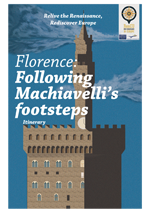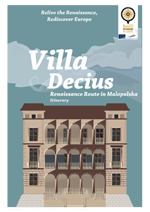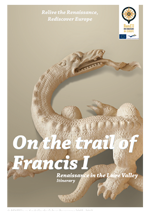The Center and the Periphery
One of the greatest issues to be faced by the citizens of Europe in the 21st century is the relationship between the traditional centers of power, such as the big cities that represent the heart of the economy, and the small local units that, with globalization and the enormous shortening of distances, acquire awareness of their own value. Reconsidering relations between the center and the periphery in the Renaissance can help us to reflect on similar problems in the present.
The relationship between the center and the periphery can be seen both as interconnection between city and country, and as interconnection between the capital of a State or Empire, the seat of political power and epicenter of cultural life, and its remote outlying districts, which tend to be forgotten. In either case, a tension is established between the two poles that often becomes a situation of hegemony. It may be that the aforesaid tensions depend also on a breakdown in this hegemony model, with the peripheral areas no longer acknowledging an entirely predominant role of leadership to the "center".
Related itineraries
![]() Following Machiavelli’s footsteps
Following Machiavelli’s footsteps

Following the Florentine itinerary devoted to Machiavelli we can trace the complex relationship between the center, the city of Florence, and the periphery, its surrounding countryside. Machiavelli himself operated to connect these two spheres, working on the one hand at the heart of Florentine political power, but frequently carrying out missions to the countryside. The tension between these two spheres emerges clearly in relation to the composition of a citizens' army, with the recruitment of peasants, more docile and socially submissive, as compared to the more dangerous urban underclass.
![]() Monastery of Serra do Pilar: a window on Europe
Monastery of Serra do Pilar: a window on Europe

The Monastery of Serra do Pilar itinerary can be seen through the lens of the relationship between the center and the periphery. In it, we take into consideration the need of the religious community of Grijó to live a secluded life, in the periphery, but at the same time the pastoral need to preach in the city's center, at Port.
![]() Renaissance route in Malopolska
Renaissance route in Malopolska

The Polish itinerary through the region of Malopolska puts us structurally in contact with the relationship between the center and the periphery. We will visit in fact both the royal castle of Wawel, with its annexed Cathedral, and a number of historic Renaissance buildings constructed in the countryside around Krakow. We can thus admire the contrast between the great opulence of the buildings in the center, many of them constructed by Italian architects, and the sobriety and composure of the peripheral buildings, which also possess however great artistic value.

The itinerary through the Chateaux of the Loire in the France of King Francis I can be read within the context of the relationship between the center and the periphery, but in an entirely specific and particular manner, also in relation to the history of France in the following centuries. The court of Francis I was in fact a nomadic court, which travelled regularly. The royal castles contained no furniture, which their owners brought with them as they travelled. The France of Francis I thus had an 'itinerant' centre, diffused over the territory. This does not imply any dispersion of energy, also as concerns culture, but on the contrary, France with its king attracted a great number of artists, becoming an authentic reign of the Renaissance.